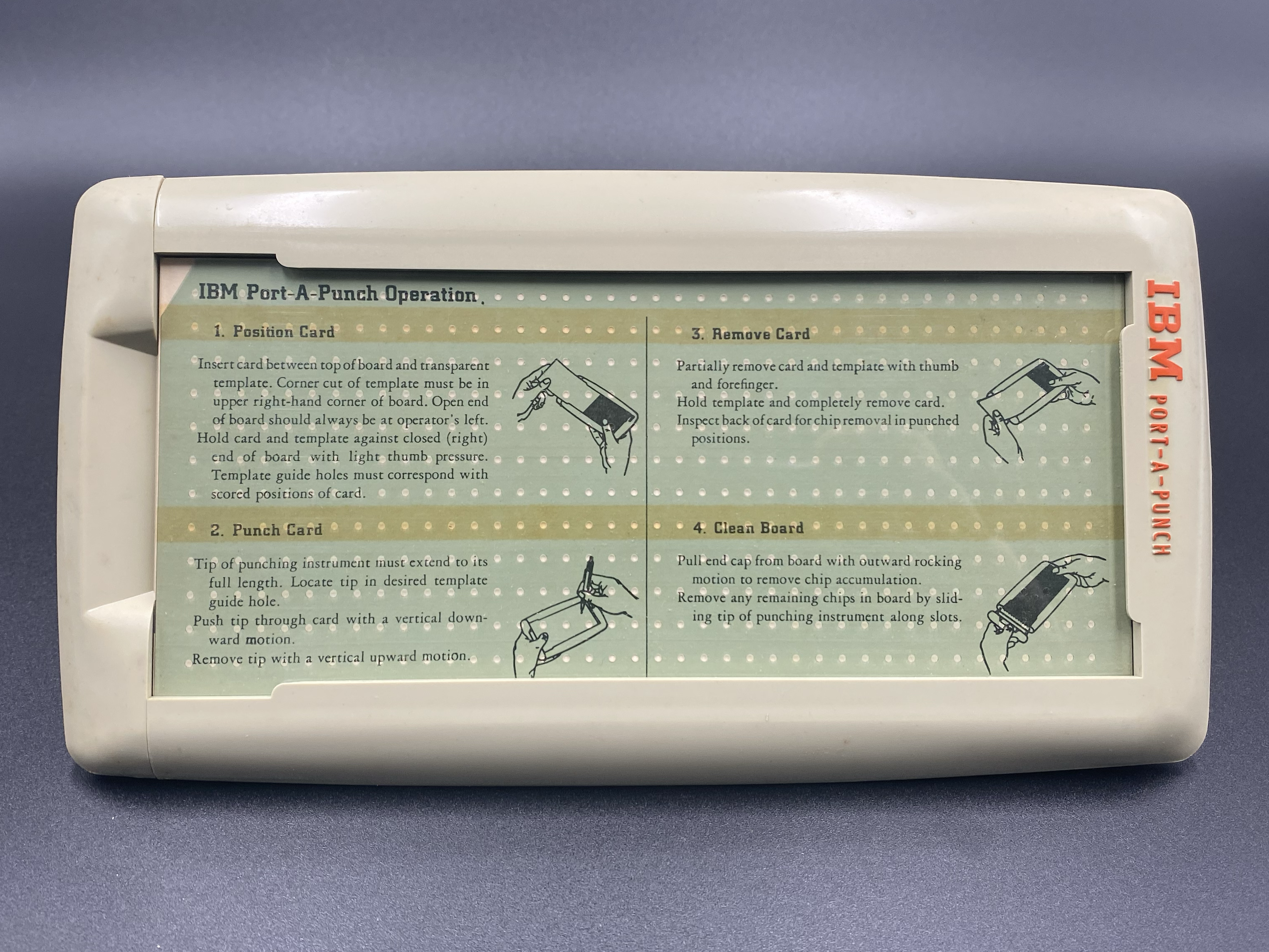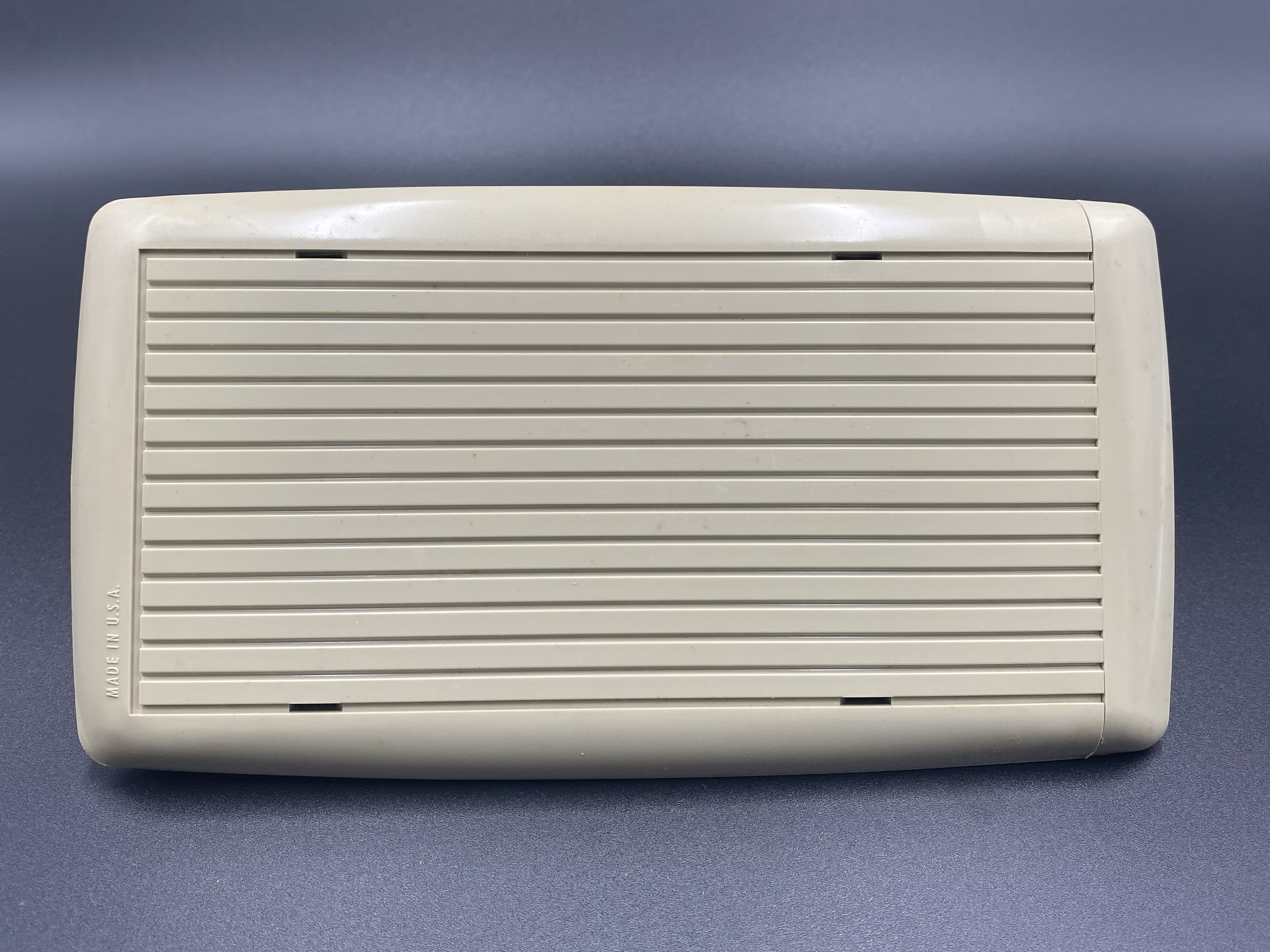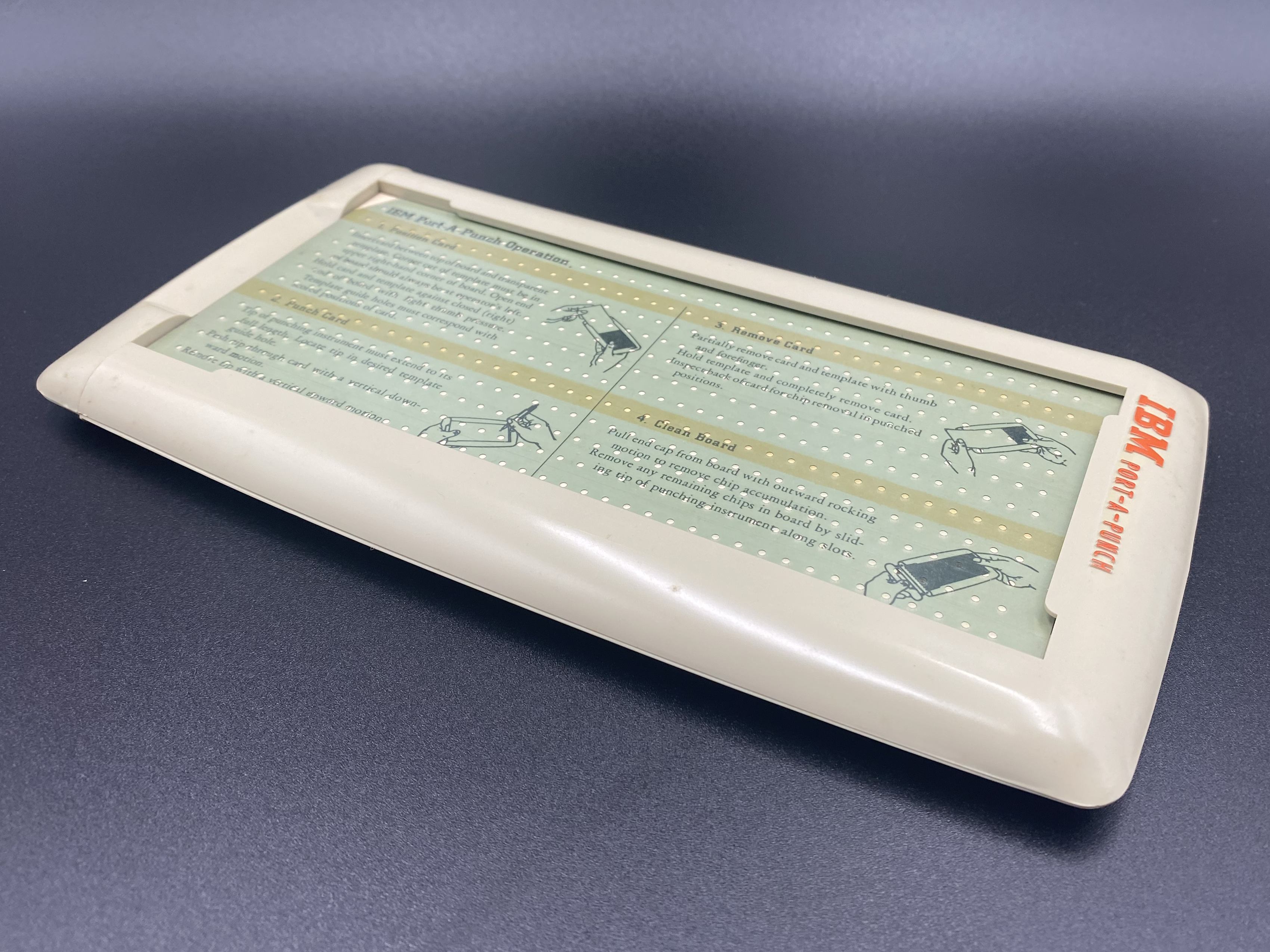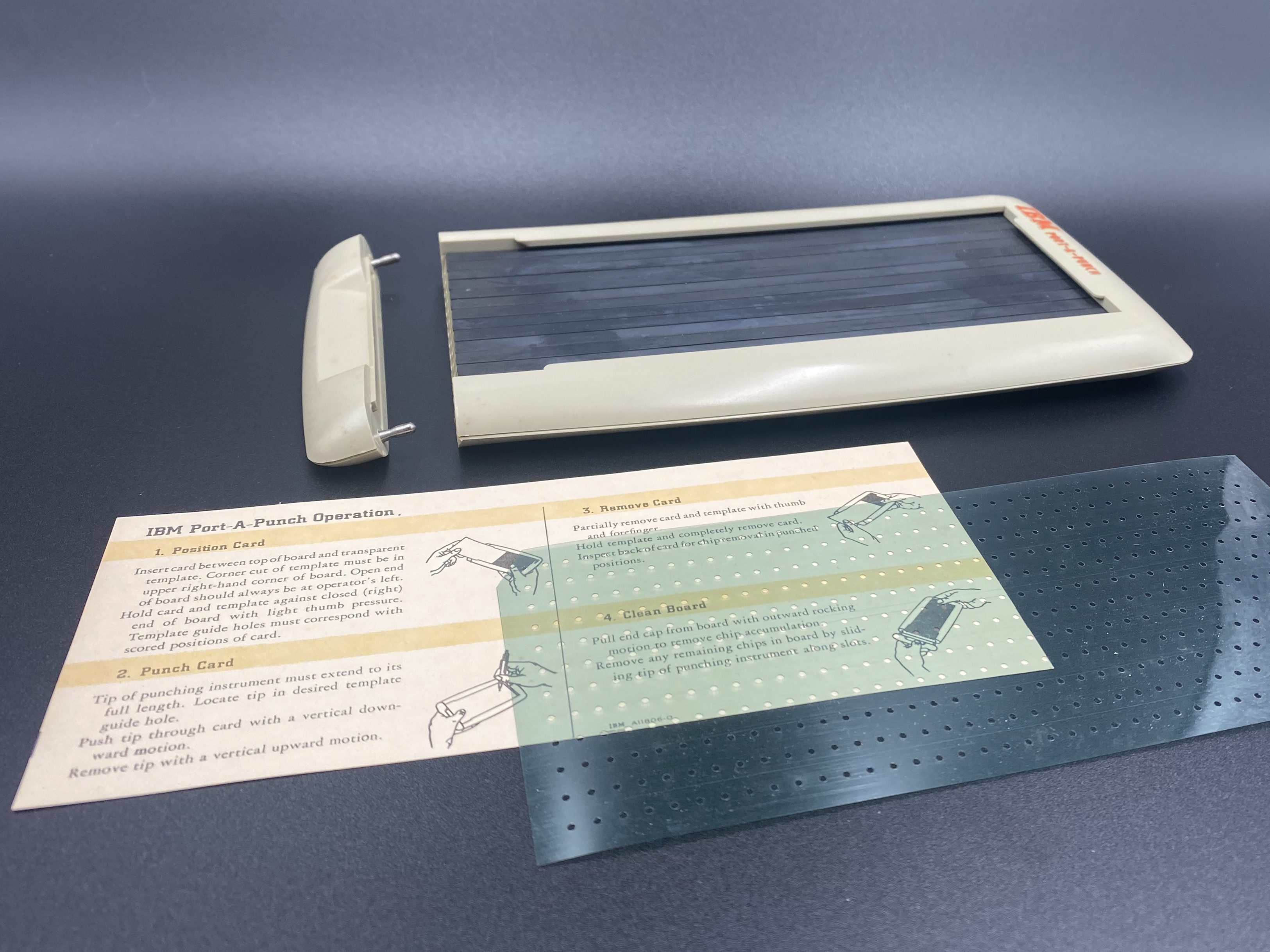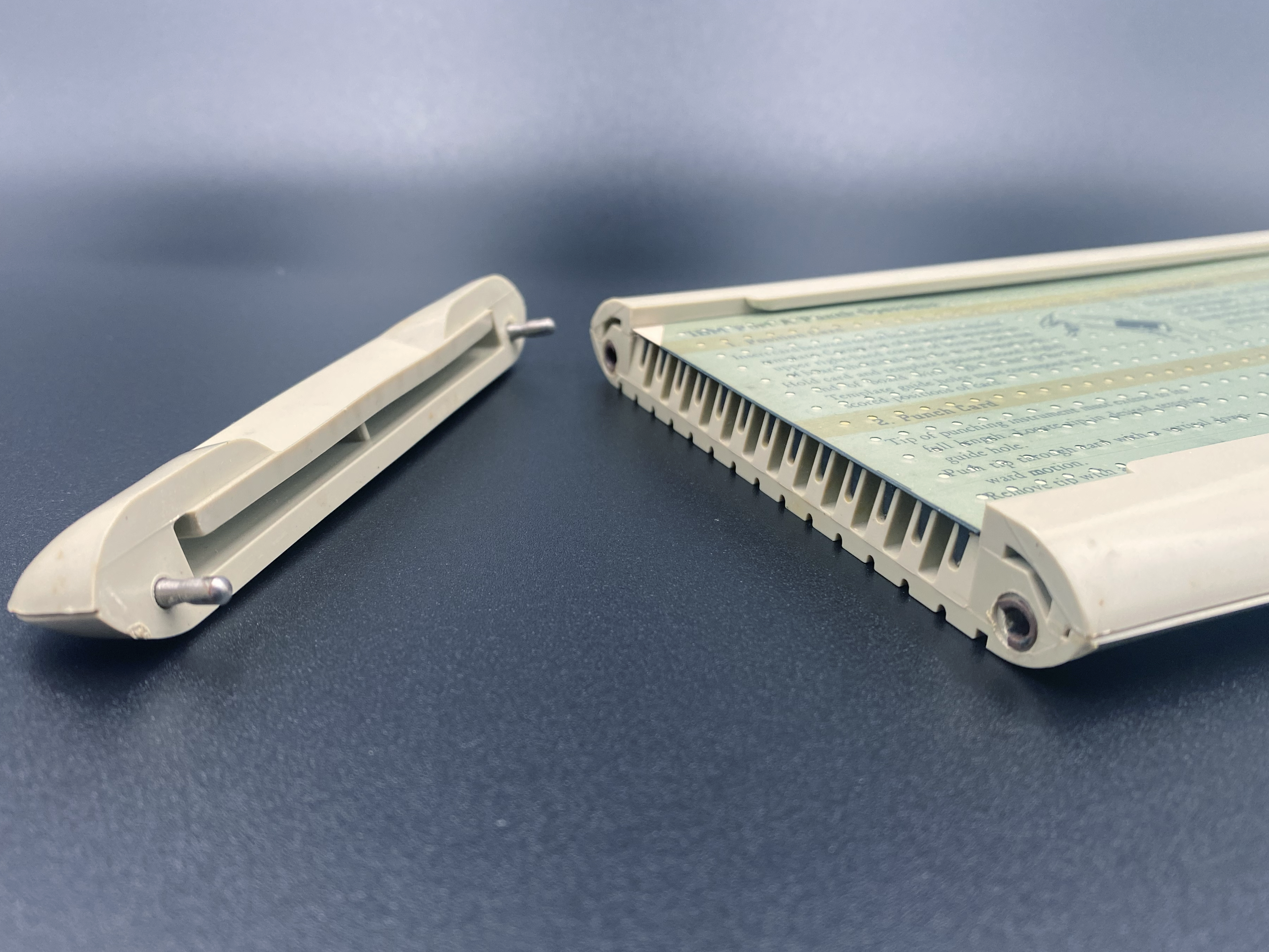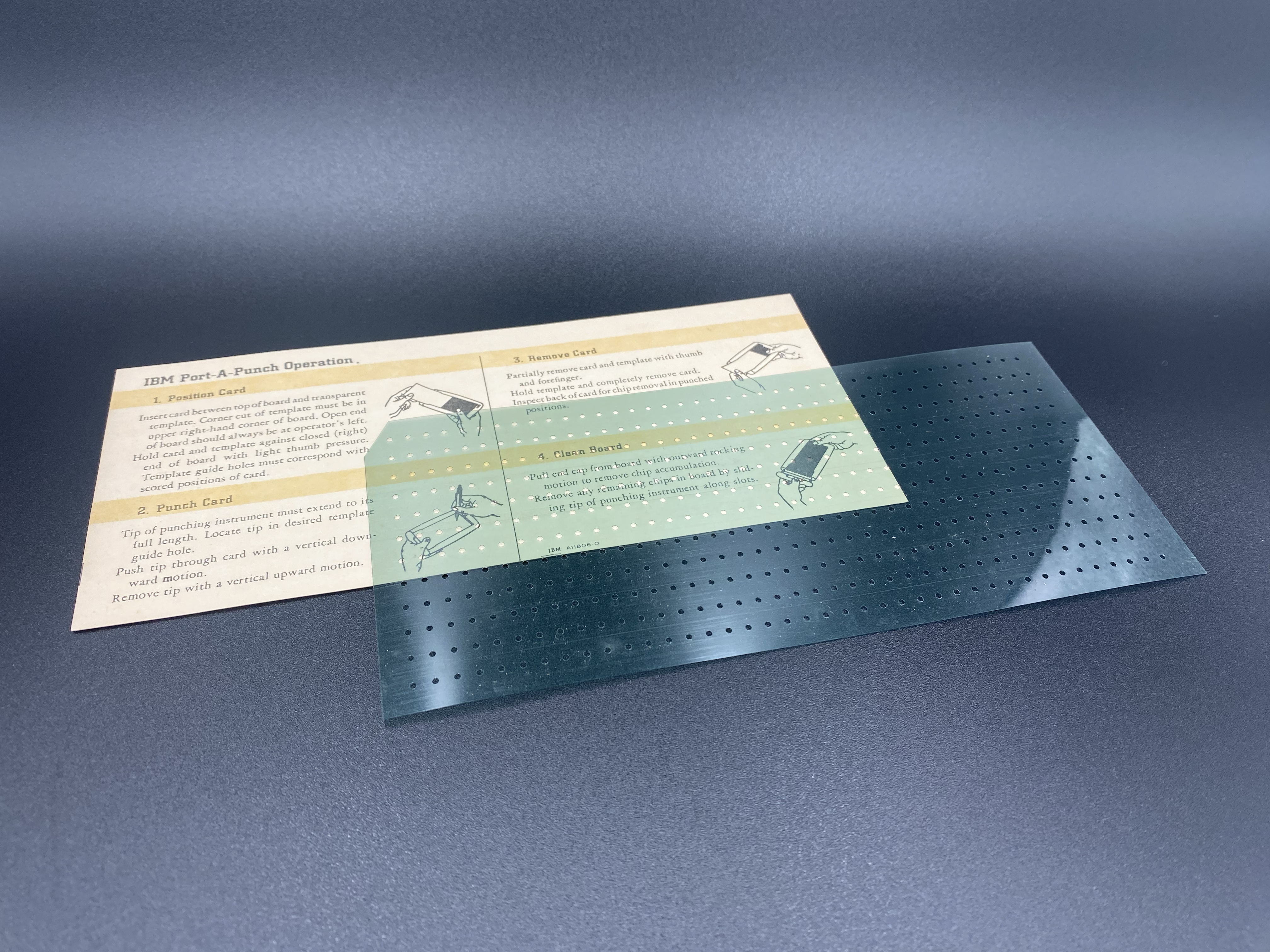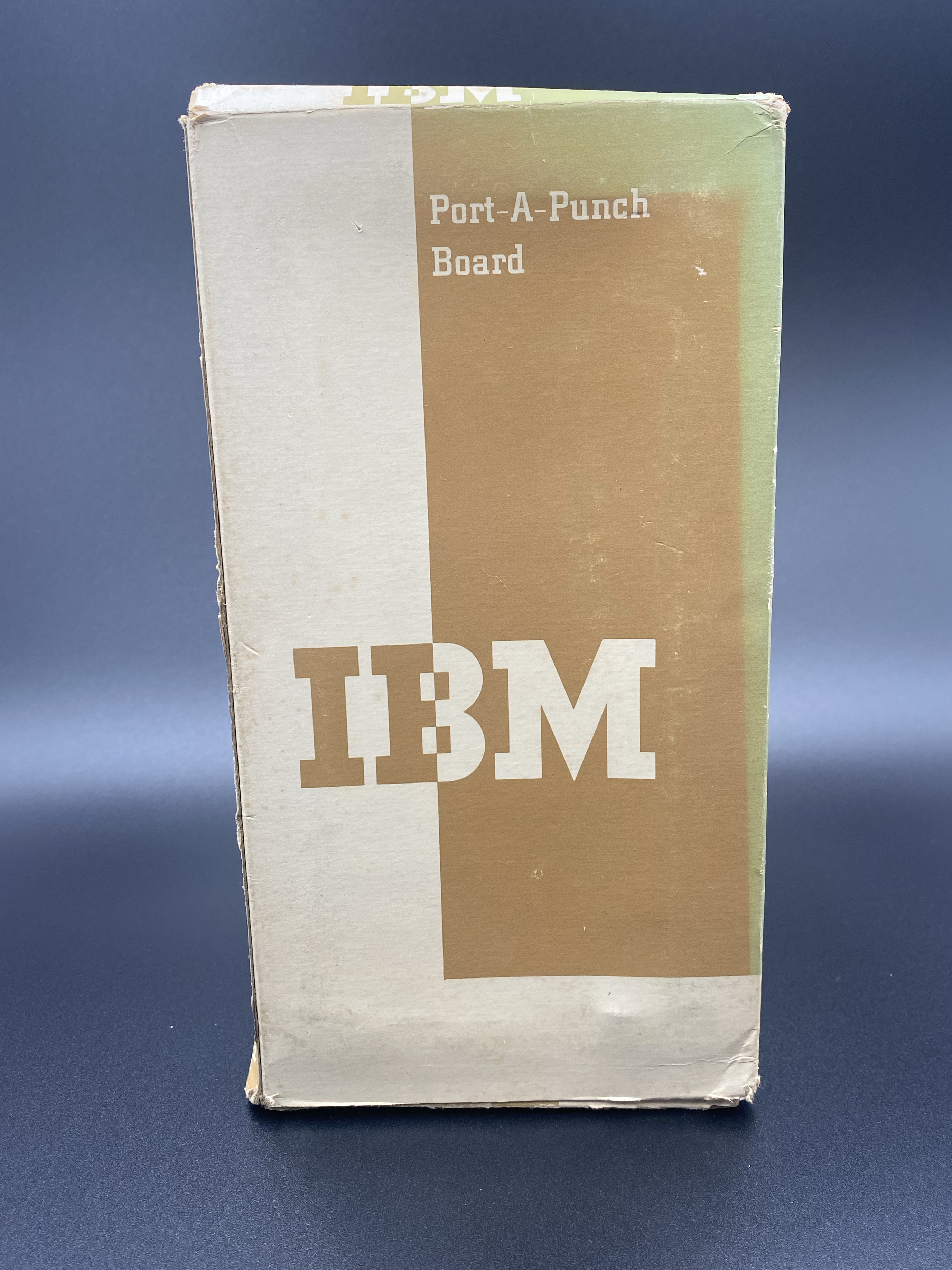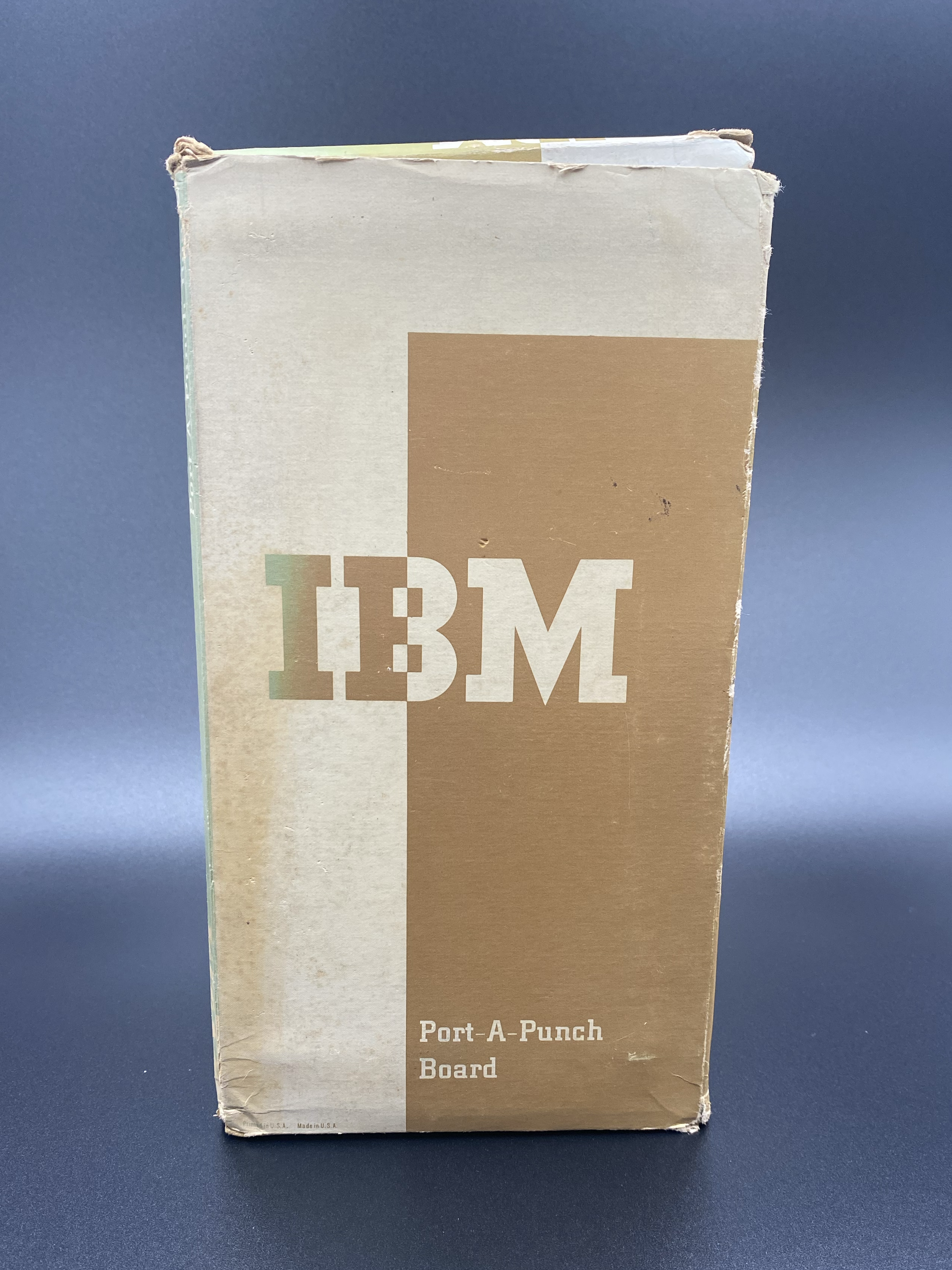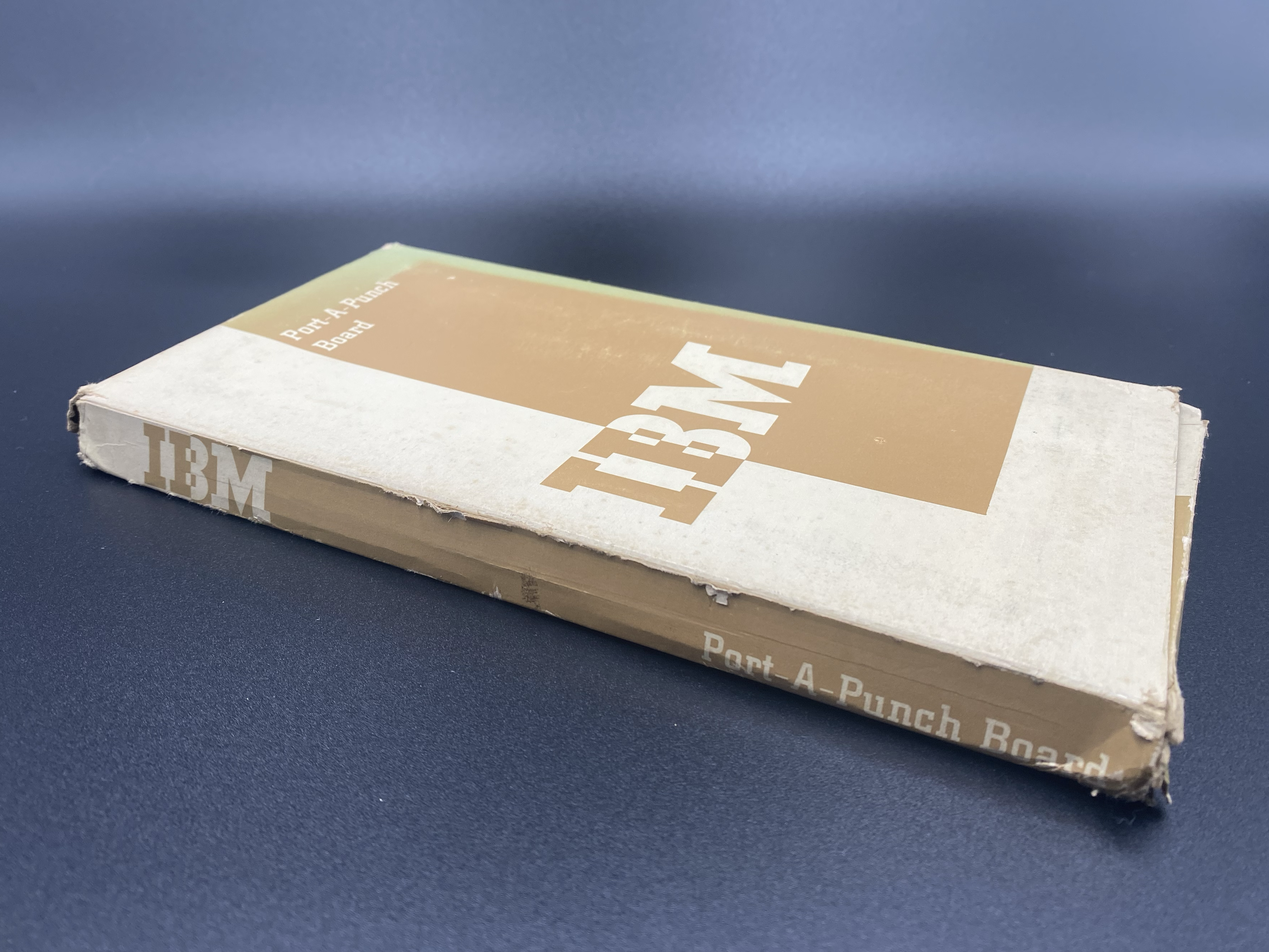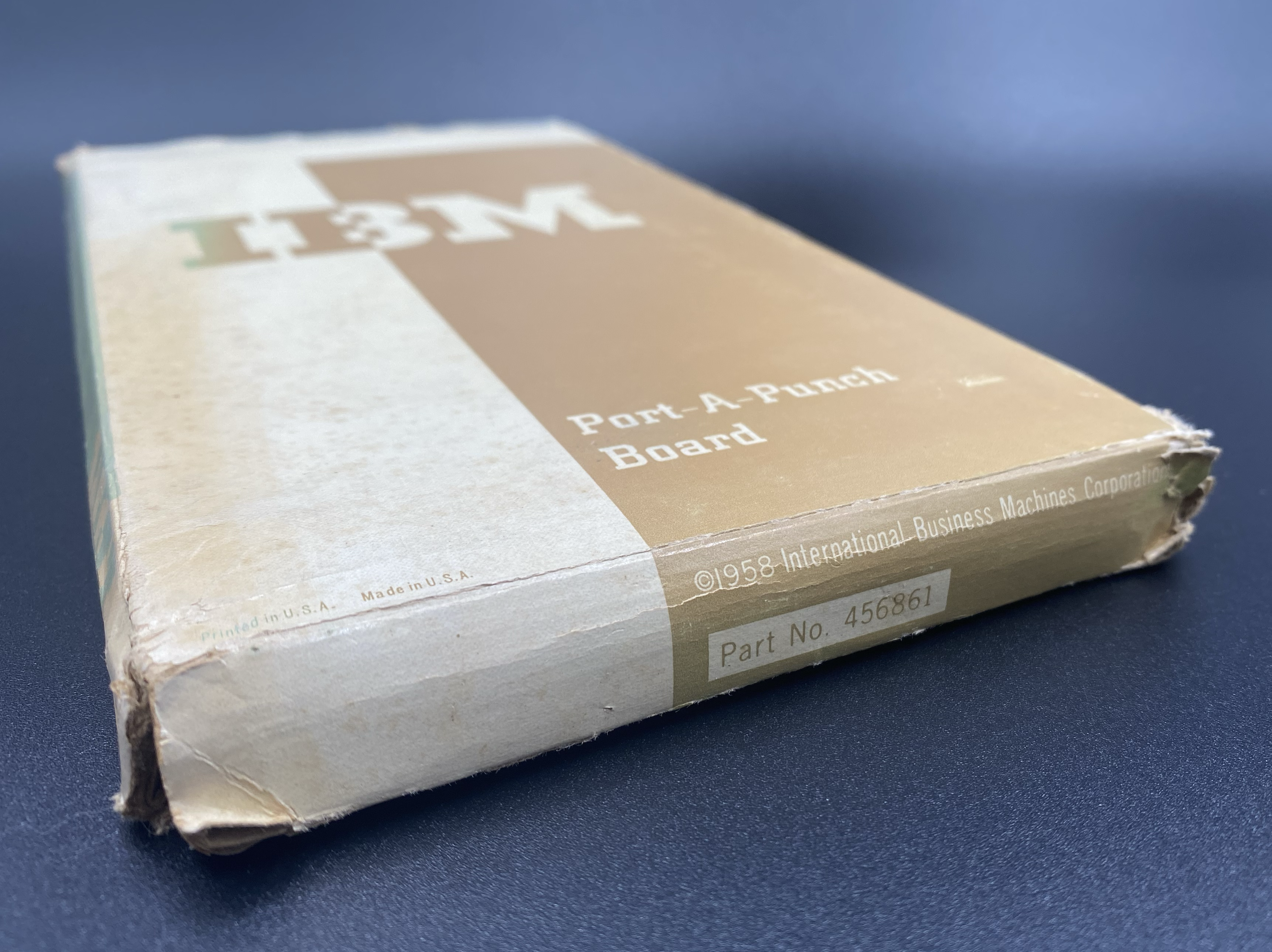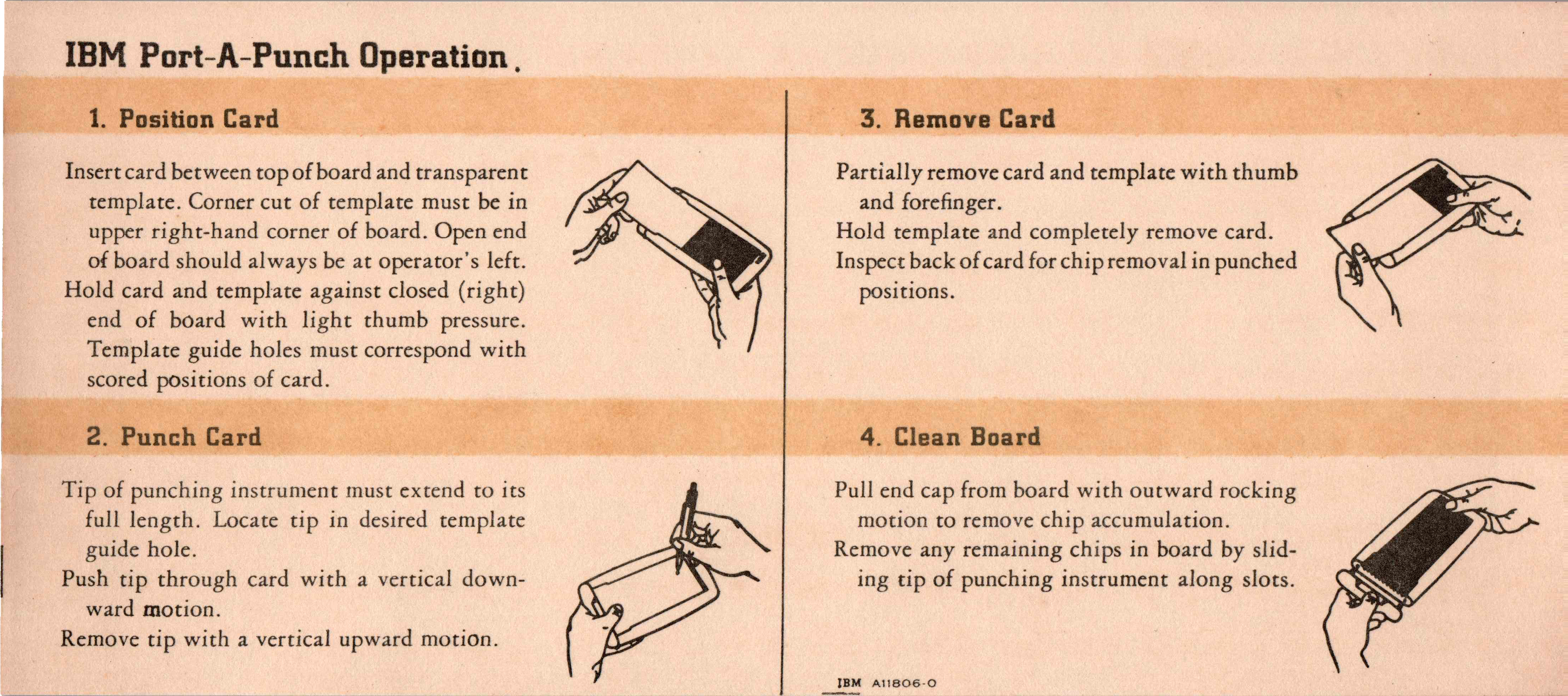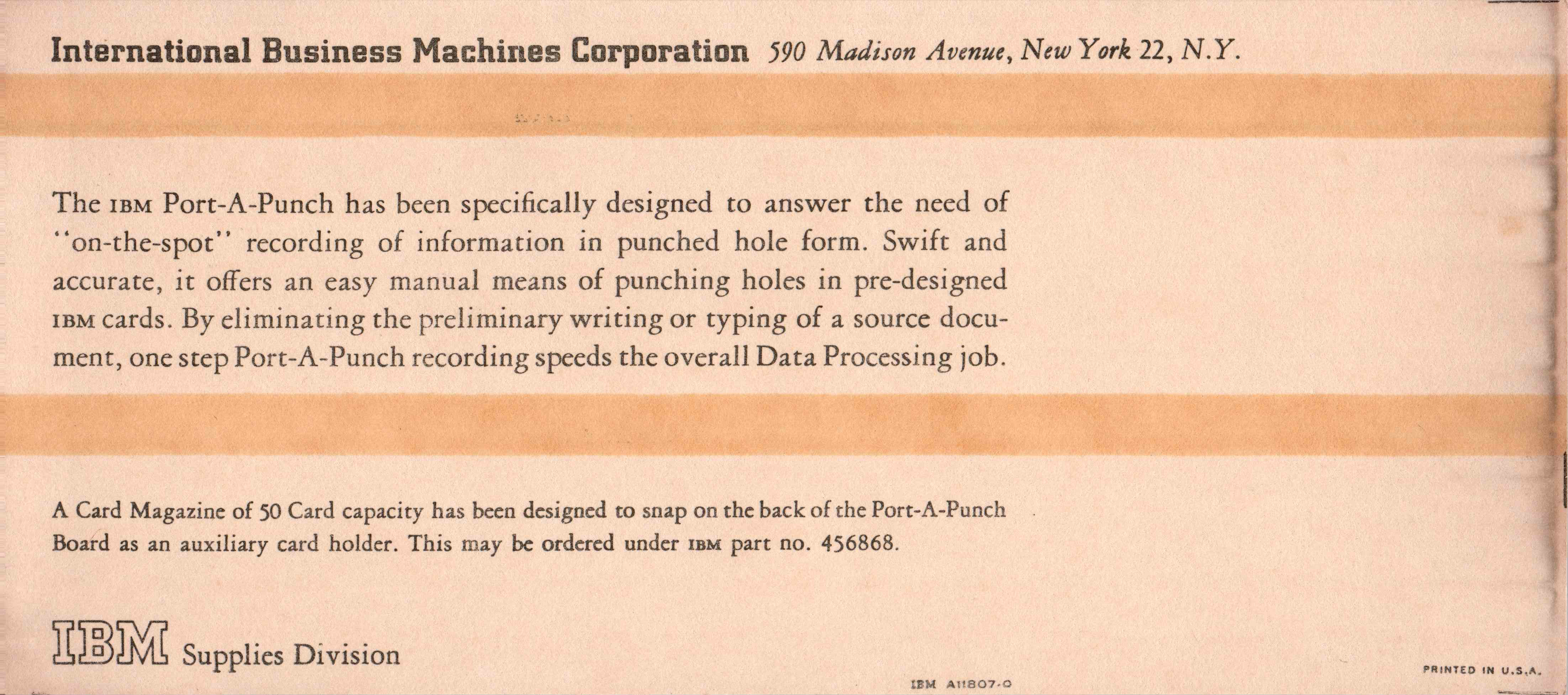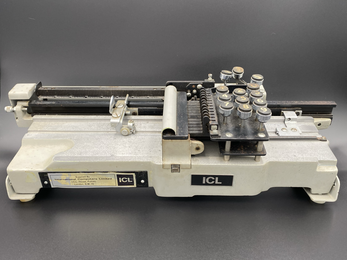The IBM Port-a-Punch was introduced in 1958 to provide IBM’s customers with a means to record data quickly without requiring data to be punched on a large, expensive, and immobile card punch. The Port-a-Punch used 40-column, specially perforated cards which allowed the user to punch out chads (called chips in the included IBM instructions) with a stylus using the punch’s purposely designed inserts.1
The Port-a-Punch was sold in a box which included the punch, a stylus, and a set of inserts which included instructions and a plastic template. This unit is missing its stylus. The Port-a-punch itself is made of a durable grey plastic with rounded corners. The front of the punch has an slot to house a punch card and a plastic template. The end of the Port-a-Punch can be removed revealing a cavity underneath the slot in which chads are collected.
The slot allows punch cards to lay flat on a series of 13 rubber strips, with 12 gaps between. These gaps correspond to the 12 rows on an 80-column punch card. The plastic template, a blue transparent plastic sheet with 12 rows of 40 small holes, was placed in front of punch card to permit the stylus to only punch the paper over card perforations.
The slot is recessed to protect the card and template from damage, however cards and inserts can still be easily inserted and removed using a finger recess at one end of the slot. At the other end of the slot the IBM logo and “Port-a-Punch” are embossed into the plastic and painted red.
The Port-a-Punch box featrues a contrasting brown and white design with the IBM logo and “Port-a-Punch Board” printed on the front, back and sides. At the base the box features a copyright notice, “© 1958 International Business Machines Corporation” and the part number “456861”.
In use a punch card would be slid into the Port-a-punch over a set of parallel rubber strips. The plastic template, Cards could be easily punched, and swapped in the field, with chads being pushed through the gaps of the parallel rubber strips and into a collection tray. This collection tray would securely hold chads until the end of the device was removed, to allow them to be emptied for disposal.
Port-a-Punches were used for a variety of applications. This collection includes examples of Port-a-Punch cards used for inventory control by the United Stated Department of Defence, quality control by the Pennsylvania Railroad, and for programming by students of the Impeerial College London. You can view all the collection’s perforated cards here.
The front of the instruction card contains the following instructions:
IBM Port-A-Punch Operation
1. Position Card
Insert card between top of board and transparent template. Corner cut of template must be in the upper right-hand corner of board. Open end of board should always be at operator’s left.
Hold card and template against closed (right) end of board with light thumb pressure. Template guide holes must correspond with scored positions of card.
2. Punch Card
Tip of punching instrument must extend to its full length. Locate tip in desired template guide hole.
Push tip through card with a vertical downward motion.
Remove tip with a vertical upward motion.
3. Remove Card
Partially remove card and template with thumb and forefinger.
Hold template and completely remove card.
Inspect back of card for chip removal in punched positions.
4. Clean Board
Pull end cap from board with outward rocking motion to remove chip accumulation.
Remove any remaining chips in board by sliding tip of punching instrument along slots.
The back of the included instruction card contains the following information:
1. IBM Archives - Port-A-PunchInternational Business Machines Corporation
590 Madison Avenue, New York 22, N.Y.
The IBM Port-A-Punch has been specifically designed to answer the need of “on-the-spot” recording of information in punched hole form. Swift and accurate, it offers an easy manual means of punching holes in pre-designed IBM cards. By eliminating the preliminary writing or typing of a source document, one-step Port-A-Punch recording speeds the overall Data Processing job.
A Card Magazine of 50 card capacity has been designed to snap on the back of the Port-A-Punch Board as an auxiliary card holder. This may be ordered under IBM part no. 456868.
IBM Supplies Division Printed in U.S.A.
